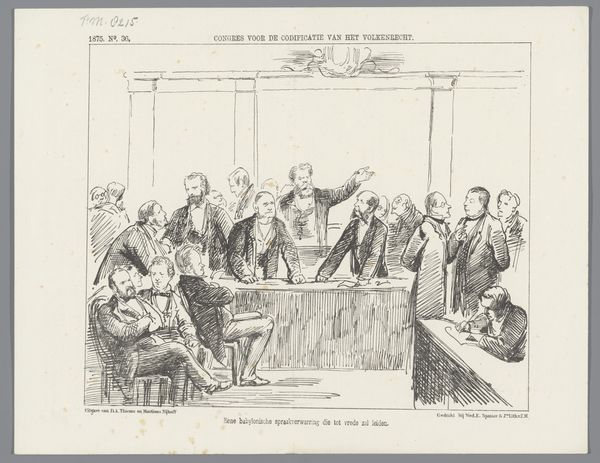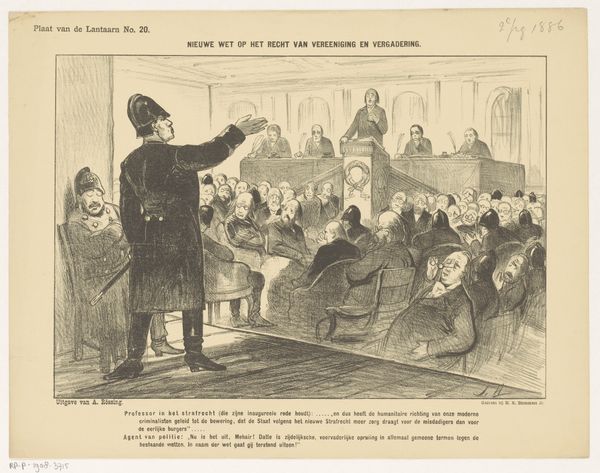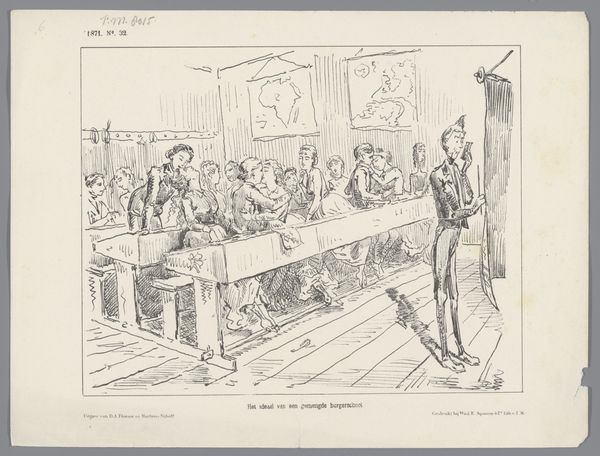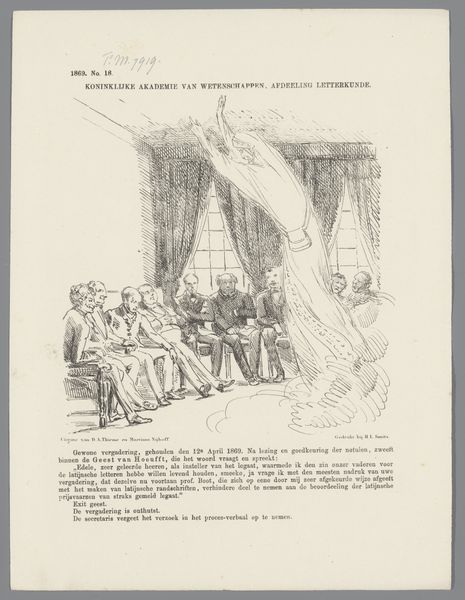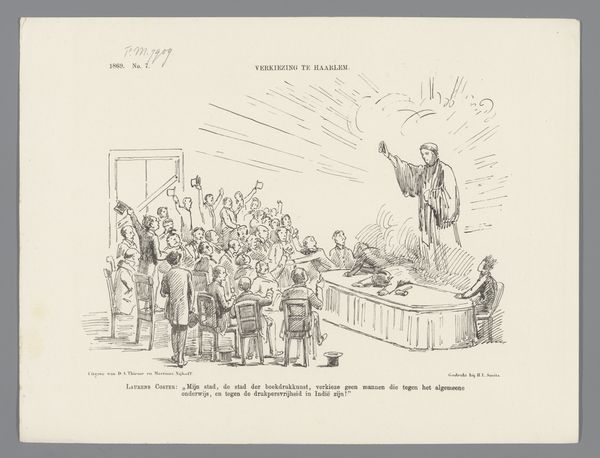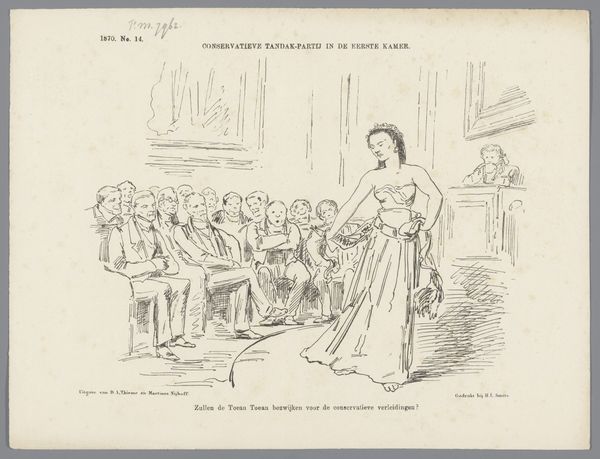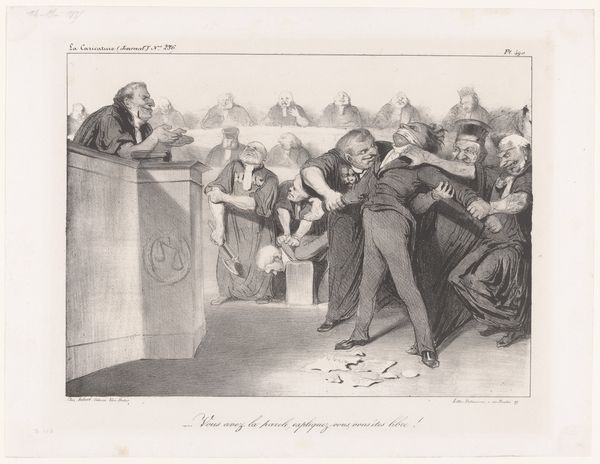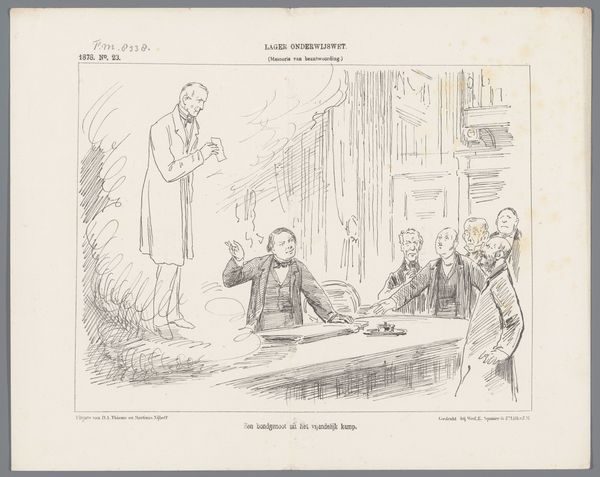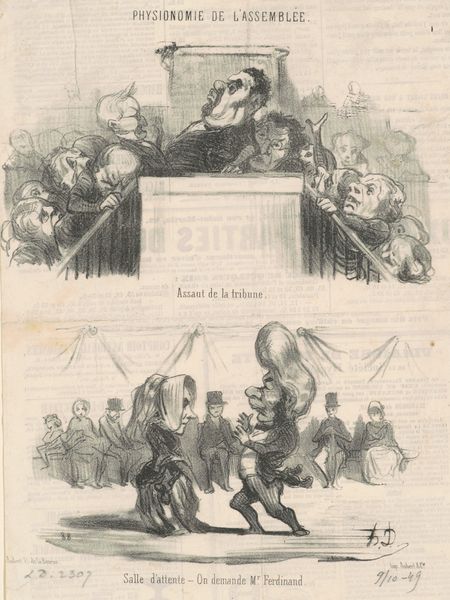
drawing, etching, pen
#
drawing
#
narrative-art
#
etching
#
figuration
#
pen
#
history-painting
#
academic-art
#
realism
Dimensions: height 215 mm, width 275 mm
Copyright: Rijks Museum: Open Domain
Curator: Here we have "Opening van de Staten-Generaal, 1887," by Johan Michaël Schmidt Crans, rendered in pen and etching. It depicts a formal gathering, presumably of the Dutch States-General. What strikes you first? Editor: The starkness of the medium is quite striking. The dense cross-hatching creates a visually active surface, lending a somber, almost anxious mood. It’s busy, yet feels constrained by its monochromatic palette. Curator: Indeed. Crans made this during a period of social upheaval and political reform. The work's explicit goal was the need to 'handle malaise' affecting its population during the year. The sheer volume of bodies present can be read as symbolic of society's stakeholders. Editor: Looking at the composition, one sees a very hierarchical arrangement. The monarch figure stands centrally, illuminated by an invisible light, while the others flank him. The use of line work here is very strategic, almost clinical. Curator: Crans’s piece speaks directly to the construction of power and its visible manifestations in the 19th century. Each figure, differentiated by attire, embodies a certain station, negotiating complex class relations of the time. How they represent—and represent themselves is a political declaration in and of itself. Editor: Yes, there's a clear attempt to capture detail through varying densities of line. Observe how he distinguishes the faces, and the textures of garments, by means of extremely varied pressure applied to the pen. This creates depth, but the limited tonality still creates flatness. Curator: Examining “Opening van de Staten-Generaal, 1887" allows us to unpack ideologies surrounding representation, governance, and national identity in late 19th-century Holland. These ideas can, perhaps, teach the public to interrogate current regimes and policies more effectively, in the light of similar imbalances that were the 'malaise' Crans depicts. Editor: From my side, I see Crans created this work not merely to replicate a historical instant, but to make formal commentary on the structure of perception itself. That use of line is not just reproductive; it transforms a moment in history into something worth seeing, feeling and understanding differently.
Comments
No comments
Be the first to comment and join the conversation on the ultimate creative platform.
